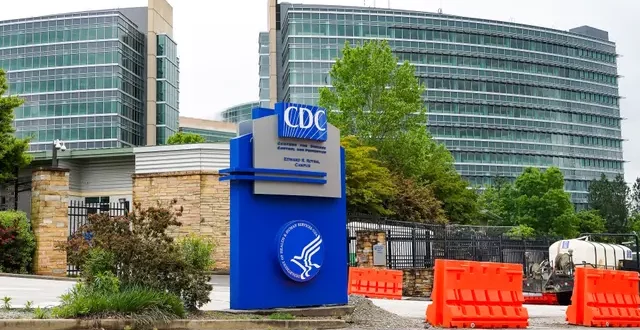Updated data provided by the U.S. Centers for Disease Control and Prevention (CDC) show that hospitalizations for COVID-19 have fallen for a fourth consecutive week, suggesting that a so-called “surge” over the summer has faltered.
For the week ending Oct. 7, hospitalizations are down by 8.2 percent, emergency department visits are down by 17.7 percent, and cases are down by 0.8 percent, according to the CDC. Deaths are down by 3.8 percent, as health officials have said that deaths generally lag behind hospitalizations.
In mid-July, around seven out of every 100,000 people aged 65 and older were hospitalized with COVID-19, said the CDC. But by mid-August, according to the agency, 16.4 per 100,000 adults aged 65 and older were hospitalized with the viral infection.
Overall, from January to August 2023, adults aged 65 years and older “accounted for 62.9 percent of all COVID-19-associated hospitalizations,” it said before suggesting that older people get the “recommended COVID-19 bivalent vaccine.”
Other than getting the vaccine, they should also adopt “measures to reduce risk for contracting COVID-19” and receive “prompt outpatient antiviral treatment after a positive SARS-CoV-2 test result,” it added.
The second highest hospitalization rate was among individuals aged 50 to 64 at around one out of 100,000, it said.
Over the summer, some media outlets and doctors suggested that the United States was currently in the midst of a COVID-19 “surge,” although the CDC’s historical data show that the summer uptick appeared to be relatively lower than previous increases in the virus.
“This increase could result from the emergence of a new COVID-19 variant with an increased ability to evade the body’s prior immunity, or from a severe influenza season combined with COVID-19 and RSV waves that are similar to last year, or, as we saw last year, an increase in RSV infections,” it also claimed. “A key factor is the timing of the peak number of hospitalizations associated with each disease and whether those peaks coincide.”
Amid the late summer rise in hospitalizations, some health officials suggested that it doesn’t appear to be as bad as previous increases.
“Looking at that graph [of] hospitalizations, even though it’s on an upward trend, that’s still lower than it was last year at this time,” Dr. John Segreti, an epidemiologist and the medical director of infection control and prevention at Chicago’s Rush University Medical Center, told ABC News in August. “The fact that the numbers are going up fairly slowly, I think is a good sign.”
Vaccine Uptake Relatively Low
Some 2 percent of all Americans have received the updated COVID-19 booster vaccine after it was rolled out last month after being approved by the Food and Drug Administration and recommended by the CDC. Overall, some 7 million people have taken the shot, updated data provided by the Department of Health and Human Services (HHS) show.
“COVID-19 vaccine distribution, which has shifted to the private market, is a lot different than it was last year when the government was distributing them,” said a spokesperson for HHS about the data. The agency is currently working “directly with manufacturers and distributors to ensure that the vaccines are getting to” various locations.
Earlier this month Dr. Mandy Cohen, the director of the CDC, told reporters that 4 million had received the new vaccines.
It the meantime, Pfizer, in guidance issued on Oct. 13, said it would slash profit and revenue estimates because of lower demand for the vaccines and other COVID-19 products. Like Moderna and Novavax, Pfizer is one of three companies that has made an updated COVID-19 vaccine currently approved in the United States.
The pharmaceutical giant now expects 2023 sales of $58 billion to $61 billion, which is down from previous forecasts of $67 billion to $70 billion, according to its guidance report that was released last week. Its revenue outlook was slashed, Pfizer said, “solely due to its COVID products,” including the vaccine and Paxlovid, its antiviral drug.
 Speedinews Spreading Daily News With Speed
Speedinews Spreading Daily News With Speed




